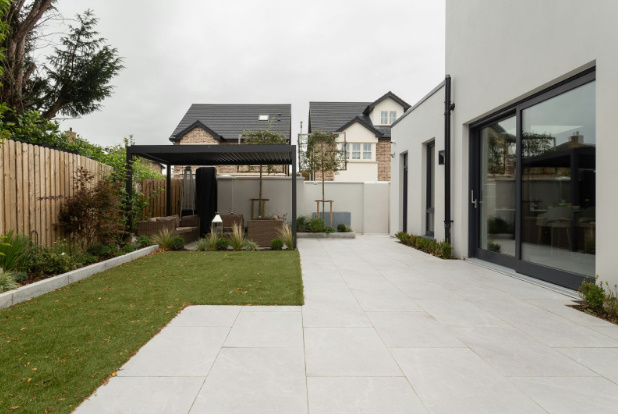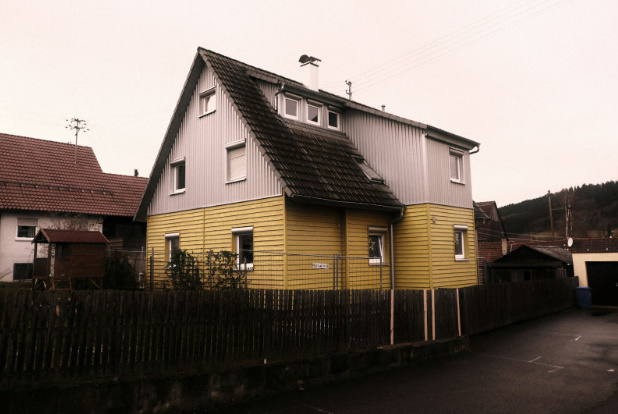Property investment represents one of the most significant financial decisions most Australians make in their lifetimes. Strategic improvements and quality construction dramatically influence property values, rental income potential, and long-term asset appreciation. Understanding which investments deliver the greatest returns guides homeowners and investors toward decisions that truly maximize property value.
Understanding Property Value Drivers
Location remains the primary property value determinant, but owners control numerous other factors affecting valuations.
Quality construction, functional design, aesthetic appeal, and additional dwelling capacity all contribute significantly to property worth. Strategic investments in these controllable factors optimize returns from property ownership.
Market trends increasingly favor properties offering flexibility, quality, and additional income potential. Buyers and renters pay premiums for well-designed spaces, superior finishes, and properties accommodating evolving lifestyle needs.
Understanding these market preferences guides investment decisions toward improvements the market actually values.
Long-term property ownership requires balancing immediate costs against future benefits, including appreciation, rental income, and lifestyle enjoyment.
Some improvements recover costs quickly through increased sale prices while others deliver value through use and enjoyment. Comprehensive thinking about value includes both financial returns and quality of life improvements.
The Custom Build Advantage
Purpose-built homes designed specifically for sites and owner requirements deliver superior functionality and appeal. Custom construction avoids the compromises inherent in production housing, where designs suit average buyers. This tailored approach creates properties that stand out in competitive markets while perfectly serving owners’ needs.
Site-specific design maximizes each property’s unique characteristics, including views, orientation, topography, and dimensions. Custom homes capture advantages that generic designs cannot leverage.
These optimized designs enhance both livability and resale appeal through intelligent site utilization.
Quality construction standards in custom builds exceed production housing norms through superior materials and craftsmanship.
Attention to detail and building science principles create homes that perform better and last longer. These quality differences become apparent to knowledgeable buyers during property evaluations.
Architectural distinction sets custom homes apart in markets dominated by repetitive production housing.
Unique designs reflecting owner personalities and contemporary trends attract buyers seeking something special. This differentiation supports premium pricing that compensates for higher initial construction costs.
Energy efficiency and sustainability features integrate naturally into custom builds from initial design phases.
Modern building science and environmental considerations guide material selection and construction methods. These features reduce operating costs while appealing to environmentally conscious buyers.
Engaging experienced custom home builders ensures projects achieve design visions while maintaining quality standards throughout construction.
Professional builders bring expertise in material selection, construction techniques, and project management that protects investments. Their involvement transforms concepts into reality while navigating challenges that defeat amateur approaches.
Future-proofing through flexible designs accommodates changing needs over decades of ownership.
Adaptable spaces, infrastructure for future technology, and expansion provisions all extend property relevance. These forward-thinking features maintain property competitiveness as markets and lifestyles evolve.
Adding Secondary Dwellings for Maximum Value
Secondary dwellings, including granny flats, dramatically increase property utility and income potential. These additional living spaces accommodate family members, generate rental income, or provide workspace separate from main residences.
The flexibility and financial benefits of secondary dwellings appeal strongly to modern property buyers.
Rental income from granny flats significantly improves property cash flow and investment returns.
Additional monthly income helps service mortgages while building equity faster. This income generation capability particularly appeals to property investors and owner-occupiers seeking financial flexibility.
Multi-generational living arrangements are increasingly common in Australian society, driving demand for properties with secondary dwellings. Aging parents, adult children, or extended family members can live independently while remaining close. This accommodation flexibility represents substantial value for families navigating changing living arrangements.
Property valuations increase substantially when secondary dwellings add functional, legal living spaces.
Appraisers recognize additional dwelling capacity through higher comparative valuations. The value increase often exceeds construction costs, making secondary dwellings excellent property investments.
Planning regulations in many Australian jurisdictions now encourage secondary dwelling construction, addressing housing shortages.
Streamlined approval processes and reduced requirements make additions more feasible. Understanding local regulations guides realistic planning for secondary dwelling additions.
Design quality in granny flats matters as much as main dwellings for property value optimization.
Well-designed, properly finished secondary dwellings contribute positively, while substandard structures may actually reduce property appeal. Investment in quality secondary dwelling construction protects and enhances overall property value.
Professional Perth granny flat builders specialize in creating secondary dwellings that meet regulatory requirements while delivering quality living spaces.
These specialists navigate approval processes, understand local requirements, and execute construction to standards matching main residences. Their expertise ensures granny flat investments achieve intended value outcomes.
Site planning positions secondary dwellings to maximize both main residence and granny flat functionality. Privacy considerations, access arrangements, and utility connections all require careful planning. Thoughtful site integration creates harmonious properties where both dwellings thrive.
Construction timing for secondary dwellings can occur immediately during new builds or later as renovations. New construction often integrates secondary dwellings more seamlessly, while additions to existing properties require more creative solutions. Both approaches deliver value when executed properly.
The Critical Role of Interior Finishes
Interior presentation dramatically influences buyer perceptions and property valuations during sales or rental marketing. First impressions formed within seconds of entering properties heavily weigh purchase decisions. Professional interior finishes create positive impressions that translate directly into higher offers and faster sales.
Paint condition and color selection represent the most cost-effective major visual improvements available. Fresh, contemporary colors transform dated interiors while neutral palettes appeal to broad buyer demographics.
These relatively modest investments deliver disproportionate returns through enhanced property appeal.
Professional painting quality far exceeds DIY efforts through superior preparation, application technique, and attention to detail.
Visible brush marks, uneven coverage, and poor cutting create amateur appearances that diminish property presentations. Quality workmanship ensures finishes enhance rather than detract from property appeal.
Color psychology influences how spaces feel and how buyers respond emotionally to properties. Light, neutral tones create spacious feelings while darker accents add sophistication and depth. Professional color consultation ensures selections enhance rather than limit property appeal.
Preparation work, including patching, sanding, and priming, determines final finish quality as much as paint application itself.
Adequate preparation creates smooth, uniform surfaces where paint adheres properly and appears flawless. Rushed preparation shows clearly through finished work, compromising overall quality.
Timing painting projects strategically maximizes impact while minimizing disruption. Pre-sale painting refreshes properties for maximum market appeal while post-construction painting completes new builds professionally. Understanding optimal timing ensures painting investments deliver maximum returns.
Engaging qualified interior painters Adelaide professionals ensures interior finishes meet the standards that property values demand.
Experienced painters bring technical skills, quality materials, and efficiency that protect painting investments. Their work creates the polished presentations that competitive property markets require.
Exterior painting complements interior work, creating a comprehensive property refreshment. Curb appeal influences whether buyers enter properties, while interiors close sales. Coordinated interior and exterior painting delivers maximum impact through complete property transformation.
Specialty finishes, including feature walls, texture applications, and decorative techniques, add character beyond standard painting.
These distinctive touches create memorable spaces that stand out in buyer memories. Strategic use of specialty finishes elevates properties above standard competition.
Coordinating Multiple Value-Adding Projects
Comprehensive property enhancement often involves multiple projects, including construction, additions, and finishing work.
Coordinating these various improvements strategically maximizes efficiency while minimizing costs and disruption. Thoughtful planning ensures projects complement rather than conflict with each other.
Phasing improvements over time spreads costs while enabling incremental property enhancement. Priorities guide which projects proceed first based on urgency, impact, and available budget. This staged approach makes substantial improvements achievable without overwhelming financial commitments.
Building relationships with quality contractors across different trades facilitates future projects. Contractors who know your property and standards deliver better results more efficiently on subsequent projects. These ongoing relationships provide trusted resources for maintenance and improvements.
Documentation of all improvements supports future property sales through evidence of quality investment. Receipts, permits, warranties, and before-and-after photos demonstrate property enhancement comprehensively. This documentation justifies asking prices while providing buyer confidence.
Financing Property Improvements
Various financing options support property improvement projects, including savings, home equity loans, refinancing, and construction loans. Each approach offers different terms, costs, and tax implications, requiring careful evaluation. Appropriate financing selection optimizes overall project economics.
Equity growth from improvements often enables refinancing that funds subsequent enhancements.
This virtuous cycle allows strategic property development over time using property appreciation to fund improvements. Careful management of this approach builds substantial wealth through property enhancement.
Tax implications of property improvements vary between capital improvements and repairs, with different deductibility treatments. Professional tax advice ensures proper classification and optimal tax treatment. Understanding these implications influences project timing and structure.
Return on investment calculations guide which improvements deliver the best value. Not all improvements recover costs equally through increased sale prices. Focusing on high-return improvements maximizes financial benefits from limited improvement budgets.
Market Positioning and Timing
Understanding local property markets guides timing for various improvements. Strong markets justify premium improvements while soft markets favor conservative enhancements. Market awareness ensures improvement investments align with probable returns.
Competitive analysis reveals which features and quality levels succeed in specific markets. Properties selling quickly at premium prices demonstrate what buyers value. This intelligence guides improvement decisions toward features the market actually rewards.
Demographic trends influence which improvements deliver maximum appeal. Properties targeting families benefit from different improvements than those appealing to retirees or young professionals. Understanding target buyer demographics guides appropriate improvement selection.
Conclusion
Maximizing property value requires strategic thinking across construction quality, functional enhancements, and professional finishing.
Custom builds establish quality foundations while secondary dwellings add functionality and income potential. Professional interior finishes complete properties with polish that markets reward through premium valuations.
The combination of quality construction, strategic additions, and excellent presentation creates properties that stand out in competitive markets.
These investments in property quality pay dividends through enhanced sale prices, rental income, and personal enjoyment throughout ownership.
Whether building new, adding secondary dwellings, or refreshing finishes, strategic property improvements represent some of the best investments Australian property owners can make in their financial futures and quality of life.




